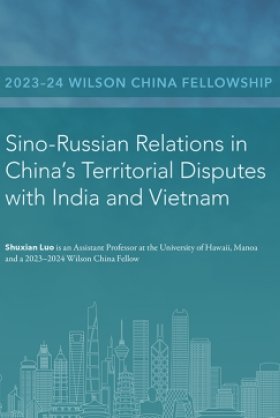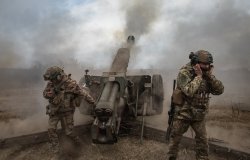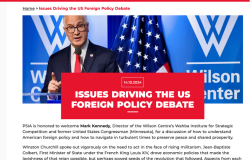Somewhere Over The Rainbow Bridge: The Story That Wasn't and the Problem There Is
Reflecting on a vehicle explosion that occurred at the Canada-US border just before Thanksgiving, global fellow Alan Bersin writes on the response by Canadian and US authorities and the lessons to be learned in handling shared security threats.

Dayah Shaltes/Shuterstock.com
The big story coming out of the explosion last Wednesday at the Rainbow Bridge is that it wasn’t the one officials initially feared. When the Bentley sped parallel to the US-Canada border line in Niagara, hit a curb, and then crashed through a median, flying airborne until disintegrating into a fireball, the first response reflexively was counterterrorist in nature: Was this an intended suicide bombing executed on Thanksgiving eve and connected to the Hamas-Israel war in the Middle East?
The Rainbow Bridge immediately was closed to further traffic, along with the Lewiston-Queenston, Whirlpool and Peace Bridge border crossings from New York into Ontario. Regional cross border movement of cargo and people was halted entirely as officials from both countries investigated a potential terrorist event. Law enforcement authorities on high alert coordinated closely and communicated frequently across governmental levels in both Canada and the United States. The 9/11 muscle response— not seen for many years — was prominently in evidence.
By the end of the day, New York Governor Kathy Hochul’s press conference ruled out terrorism, and cross-border trade and travel resumed. Questions remain about Monica and Kurt Villani, the couple that was killed in the incident and the mechanical failures, or medical issues, surrounding the tragic trajectory of their vehicle. But the FBI relinquished its federal terrorism-based jurisdiction over the matter and these inquiries will be pursued by local police as a traffic wreck.
The main takeaway from the case is that counterterrorism remains alive and well on the US-Canada Border. This is praiseworthy but carries with it a nagging question about why similar seamless cooperation, coordination, and communication between Canada and the United States doesn’t extend more broadly across the bilateral agenda. For example, the COVID pandemic resulted in almost three years of entirely uncoordinated travel policy responses by Customs and Border Protection and Canada Border Services Agency, the two countries’ management agencies. This problem inflicted substantial harm on citizens of both countries, particularly in the close-knit communities that dot the border. Yet two years later, the issue of what went wrong — why public health precaution could not successfully be incorporated in the cross-border homeland security enterprise — still has not been resolved or even fully acknowledged by authorities in either country.
Contagious disease is not the only unaddressed cross-border public safety concern that could stand regular, ongoing bilateral attention. A number of other threat domains and response strategies central to homeland defense and security could surely benefit from sustained institutionalized consultation in an age of polycrisis. These include intensive advance planning for a Canada-US coordinated response to natural disasters like catastrophic weather events or man-made crises like oil spills or cyber security breaches. Sustained consultation “to the left of boom” on these crucial topics, before they occur, is largely conspicuous by its absence.
Paradoxically, the deep and historic friendship between Canada and the United States is not matched by modes of regular official communication and established mechanisms for bilateral planning in advance of crisis. The habit has been established in the counter-terrorism context but not elsewhere. Perhaps that is the message to be drawn from last week’s Rainbow Bridge explosion: don’t take our friendship for granted and prepare together and well ahead of time for disaster other than terrorist attack.
About the Author
Alan Bersin
Former Assistant Secretary for International Affairs and Chief Diplomatic Officer, Office of Policy, Department of Homeland Security

Canada Institute
The mission of the Wilson Center's Canada Institute is to raise the level of knowledge of Canada in the United States, particularly within the Washington, DC policy community. Research projects, initiatives, podcasts, and publications cover contemporary Canada, US-Canadian relations, North American political economy, and Canada's global role as it intersects with US national interests. Read more













